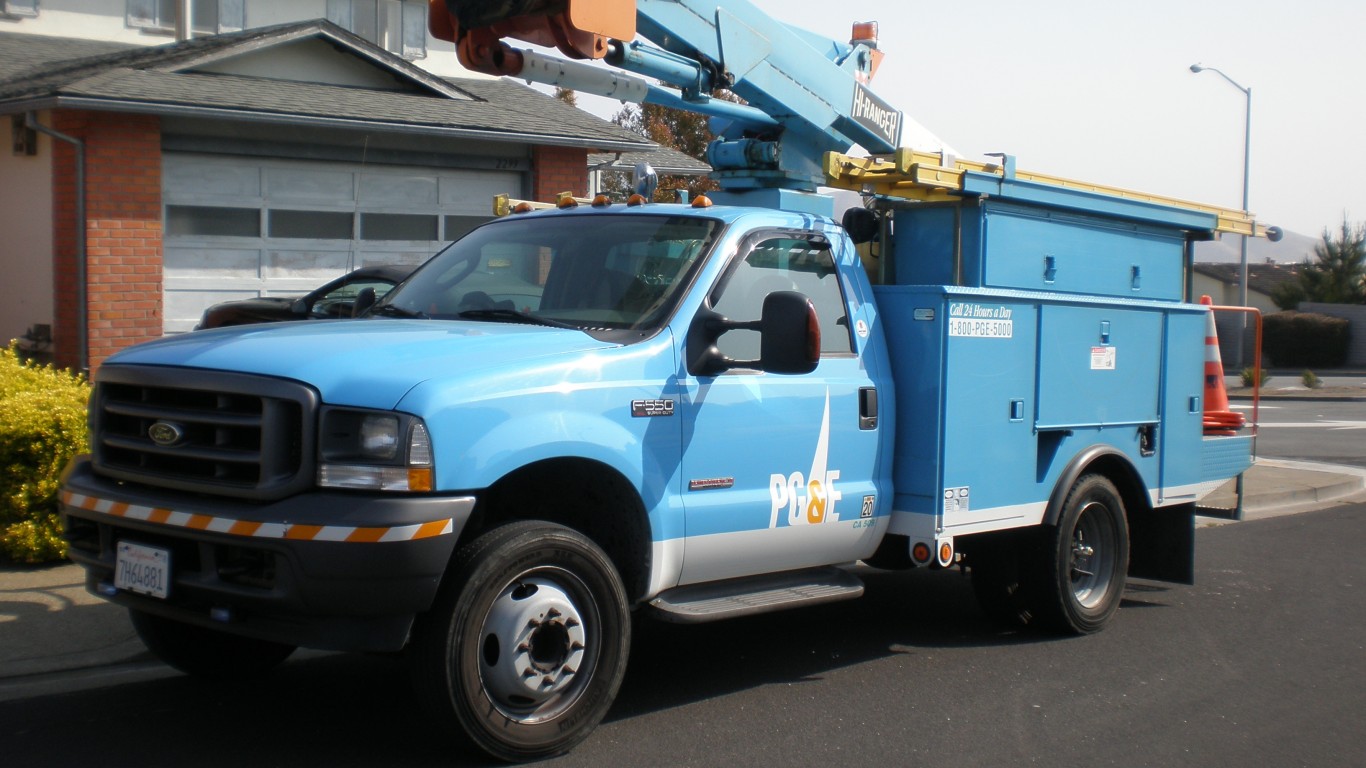Infrastructure
Why Californians May Pay 5 Times More for Electricity This Year

Published:
Last Updated:

In a filing with the U.S. District Court in San Francisco, PG&E Corp. (NYSE: PCG) told the judge that the company cannot afford to spend an estimated $75 billion to $150 billion to inspect its transmission and distribution lines and clear trees that may topple onto the lines and spark a fire like last November’s Camp Fire that killed at least 86 people and destroyed more than 18,000 buildings. The filing responded to the judge’s demand for a vegetation management plan.
To meet Judge William Alsup’s demand, PG&E further claimed that the utility would have to raise rates to 16 million customers by an estimated five times the current cost of a typical one-year bill. The company went on to say that the court’s order requires PG&E within five months to remove or trim trees and branches that could bend, break or fall into power lines, poles or electric equipment as a result of high wind.
CNBC cites the filing: “The work that would be required is so labor-intensive and costly that compliance is technically and operationally infeasible.”
Instead of paying its expected liabilities for the past two years’ wildfires, PG&E plans to file for Chapter 11 bankruptcy protection next week. In a filing with the U.S. Security and Exchange Commission (SEC) earlier this month, the company estimated that its liability total from 2017 and 2018 wildfires is likely to exceed $30 billion.
This isn’t PG&E’s first rodeo. Its bankruptcy filing in 2001 was among the largest-ever and followed a run-up in wholesale electricity prices that were later linked to Enron’s manipulation of the California market. Then-governor Gray Davis bailed out PG&E with state money and paid the price at the ballot box, losing a recall election to Arnold Schwarzenegger. PG&E ultimately paid more than $10 billion to its creditors on its exit from bankruptcy. The company’s customers each paid an estimated $1,300 to $1,700 over a period of nine years in the form of a surcharge on their electricity bills.
The company’s protests to Judge Alsup’s order are not much more than a scare tactic that PG&E probably hopes will raise a clamor among its customers for the state to do something. If history is any guide, another bailout could be political death for new governor Gavin Newsom.
The state public utility commission could allow PG&E to issue state-backed bonds, but the company’s customers would end up paying those costs eventually as well. Besides, the commission has set some pretty strict conditions on more bonding authority for PG&E and the company has balked.
Asset management firm and PG&E shareholder Blue Mountain Capital last week sent a letter to the company demanding that it drop its plan for bankruptcy, claiming that the company has “ample liquidity” to continue operating without wiping out shareholders. Environmental activist Erin Brockovich agrees and told CNBC on Wednesday that PG&E should not be able to use bankruptcy “to get out of their responsibilities.”
For PG&E, the best solution is bankruptcy. For nearly everyone else, it’s just about the worst solution. The jury’s still out.
Average electric bill: Check out which states have the highest.
If you’re one of the over 4 Million Americans set to retire this year, you may want to pay attention.
Finding a financial advisor who puts your interest first can be the difference between a rich retirement and barely getting by, and today it’s easier than ever. SmartAsset’s free tool matches you with up to three fiduciary financial advisors that serve your area in minutes. Each advisor has been carefully vetted, and must act in your best interests. Start your search now.
Don’t waste another minute; get started right here and help your retirement dreams become a retirement reality.
Thank you for reading! Have some feedback for us?
Contact the 24/7 Wall St. editorial team.